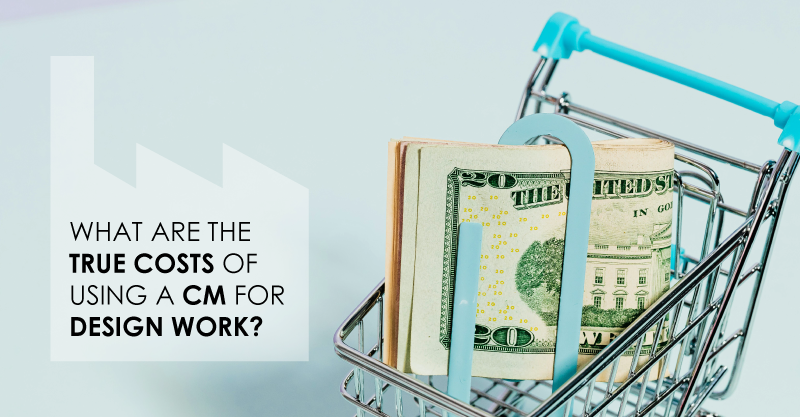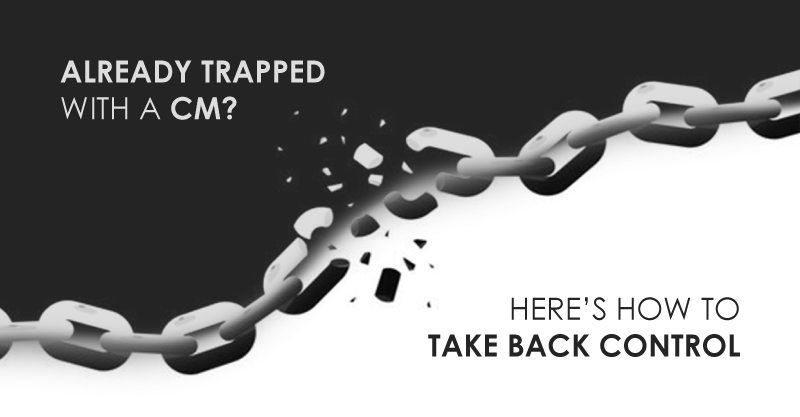Contract manufacturers (CMs) play a vital role in the product development process. They offer deep manufacturing expertise and valuable insights that can improve a product’s design for production. At DiMonte Group, we’ve partnered with many CMs to help our clients launch successful products. That said, entrusting your product’s design work entirely to a CM doesn’t always yield the best outcome. In some cases, it may be the right solution, but it depends on your goals, the complexity of your product, and the nature of your contract. We’ve seen many clients struggle with hidden costs, control issues, and IP complications that arise from contract manufacturer design work. Is trusting a CM for your design the best choice for your project?
Before you commit to CM-led development, here are some critical considerations:
Costs and Financial Impact: What are the true costs?
Control of the Developed Product: Who really owns the design?
Motivation: Is the CM acting in my best interest?
Communication: How well can I collaborate with a CM?
Intellectual Property Risks: Will my IP be protected?
Supply Chain: What supply chain factors could affect CM decisions?
Expertise: Do they have experience in my industry or product category?

Costs and Financial Impact: What are the true costs of contract manufacturer design work?
A common scenario for a CM doing design work is that non-reoccurring engineering (NRE) costs are amortized over the production volume, meaning the initial investment is spread across the units produced. This will give a lower upfront cost but will increase the unit cost and will typically be tied to a minimum order volume. Ultimately the CM will recover the NRE cost, and the higher unit cost may not place you in the best position for a competitive advantage.
Another item to consider is the tooling costs. For example, a CM may offer to amortize the cost of tooling along with NRE, incorporating them into the unit cost. This can make the upfront cost look very attractive but prevents you from treating the tooling as a capital expense, which could have depreciation and tax benefits.

Control of the Developed Product: Who really owns the design?
When CMs take on design work, they may retain ownership of source files, effectively holding your design as collateral until a certain production volume or other milestone is met. Under contract, you may not be able to receive native CAD files, full assembly data, or even control over proprietary elements of the design.
This lack of access can make switching manufacturers prohibitively expensive. While this might be acceptable for a one-time production run, most businesses prefer full control over their product’s source file database.
Additionally, consider the implications of design changes. When customer demands necessitate tooling modifications, who bears the cost of those changes and the associated design time? Will the CM prioritize your needs or their bottom line when production adjustments and redesigns are required?
Motivation: Is the CM acting in my best interest?
A CM is typically driven to deliver a production-ready product as quickly as possible, focusing on efficiency in manufacturing and their internal operations. While this can be helpful in maintaining the CM’s return on investment (ROI) and profitability, it may not align with your quality expectations or yield direct cost savings for you.
Once production begins, CMs may be reluctant to make product improvements beyond manufacturing efficiencies since new NRE costs may not be recoverable. This can limit innovation and responsiveness to market demands.

Communication: How well can I collaborate with a CM?
Using a CM can give a single point of contact for development, supply chain, and manufacturing, which offers some advantages. However, this can also create bottlenecks, particularly if the CM is not local. Communication barriers, including language differences, time zone misalignment, and sample shipping time can complicate collaboration.
The design and development phase historically favors rapid decisions that can be made locally with good communication. Effective communication is crucial, especially for complex projects and emerging technologies.
Intellectual Property Risks: Will my IP be protected?
Engaging a CM for design work introduces potential intellectual property (IP) risks. Since they have in-depth access to your project details and first access to the innovations they create, ensuring the security of your IP is critical.
- Do they have any conflicting interests?
- Are they bound by U.S. intellectual property laws?
- Is your technology patentable?
- Do they work with competitors in your space?
- What happens to your design files if the relationship ends?
Since a CM can have different motivations than a design consultancy or internal design team, care should be taken to ensure your IP is safe. Without clear contractual agreements, you may find yourself with limited control over your design assets.
Supply Chain: What supply chain factors could affect CM decisions?
A CM may make design decisions that prioritize their available production equipment, or components that best suit their supply chain. While this can streamline manufacturing, it doesn’t always align with what’s best for your product’s long-term performance, cost structure, or quality. In some cases, these decisions could be made without your input.
Key questions to consider:
- Are they objectively evaluating multiple sources for components?
- Could they be pushing the excess inventory they need to offload?
- What happens when you decide to move production to a different location or manufacturer?
Expertise: Do they have experience in my industry or product category?
Does the CM have the specialized experience required for your product’s design? While they may excel at manufacturing, they might lack expertise in current market trends, new technologies, and best design practices.
CMs often specialize in manufacturing engineering; optimizing how a product is built. Firms like DiMonte Group focus on design engineering; optimizing what gets built. The ideal scenario is a collaborative partnership where both perspectives are integrated early, ensuring a holistic development process that prioritizes both manufacturability and functionality.
Why Choose DiMonte Group Instead?
Whether your product is first of its kind, or competing in a crowded market, it will benefit from a dedicated design firm with broad industry knowledge and a strong connection to the latest advancements. DiMonte Group has experience designing for many niche industries and product applications, allowing us to apply insights from past projects to fuel new product innovations. Even if you have a well-conceived product idea, collaborating with a dedicated design firm can introduce fresh perspectives, innovation, and cutting-edge solutions tailored to your needs.
Unlike CMs whose focus is their bottom line, our primary motivation is to deliver the best design solutions within your timeline and budget – because we want to be your trusted partner on the next project, too. By choosing DiMonte Group, you ensure that your product is designed with the highest standards, free from the potential pitfalls of contract manufacturer-led development. Our goal is to build long-term partnerships by providing exceptional design services that empower our clients with full control over their product development

Already Trapped with a CM? Here’s How to Take Back Control
There are plenty of valid reasons to move on from your current contract manufacturer. Rising tariffs, supply chain disruptions, or strategic decisions to re-shore production are pushing more companies to bring manufacturing back to the U.S.
But what happens when your design is still locked up overseas?
At DiMonte Group, we have helped dozens of clients regain control of their products. We’ve guided many companies through the process of untangling their IP from overseas manufacturers and transitioning to domestic production, without starting from scratch.
If your current design is built around Euro or Asian components, we can help. Our team is skilled in redesigning products using commonly available U.S. components, including imperial-sized hardware, standard gauge materials, and North American electronics. We’ll optimize your product for local sourcing while improving manufacturability and preserving your design intent.
Whether you’re looking to re-shore your production or simply want to secure your design independence, we’re here to help. Reach out to start the conversation, and let’s explore how DiMonte Group can help you take back ownership and chart a better path forward.
To learn more, please explore this article: Do You Really Own Your Product Design?
About DiMonte Group
With a track record of over 4,000 successful projects and more than 100 U.S. patents, our multidisciplinary team consistently delivers superior solutions that exceed client expectations. We bring all the disciplines needed for physical product development under one roof. Our on-staff team of industrial designers, mechanical engineers, software developers, and electrical engineers work collaboratively with clients to invent, refine, and launch products. This integrated, cross-functional approach not only accelerates time-to-market but also enhances product quality and drives innovation.
